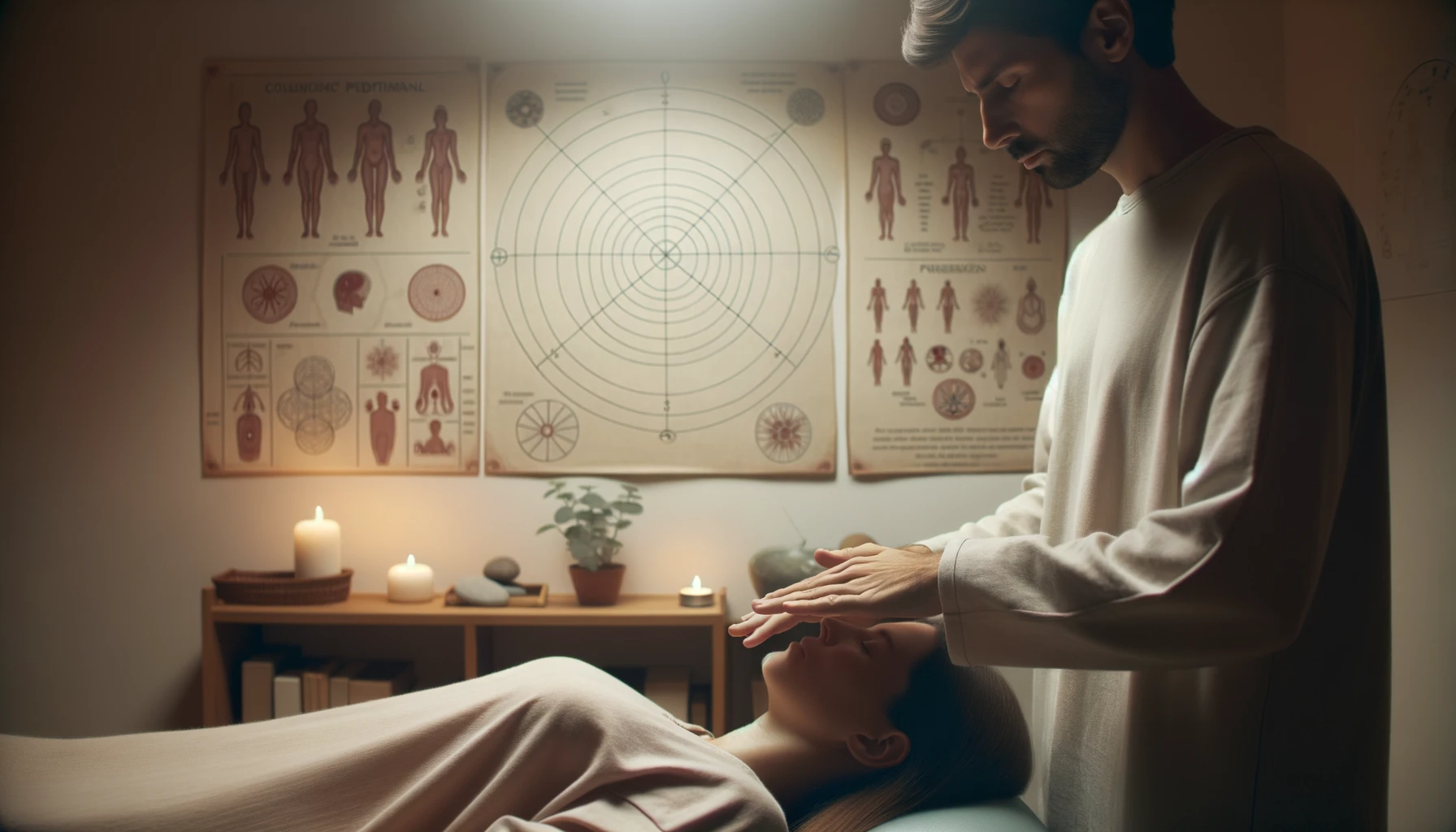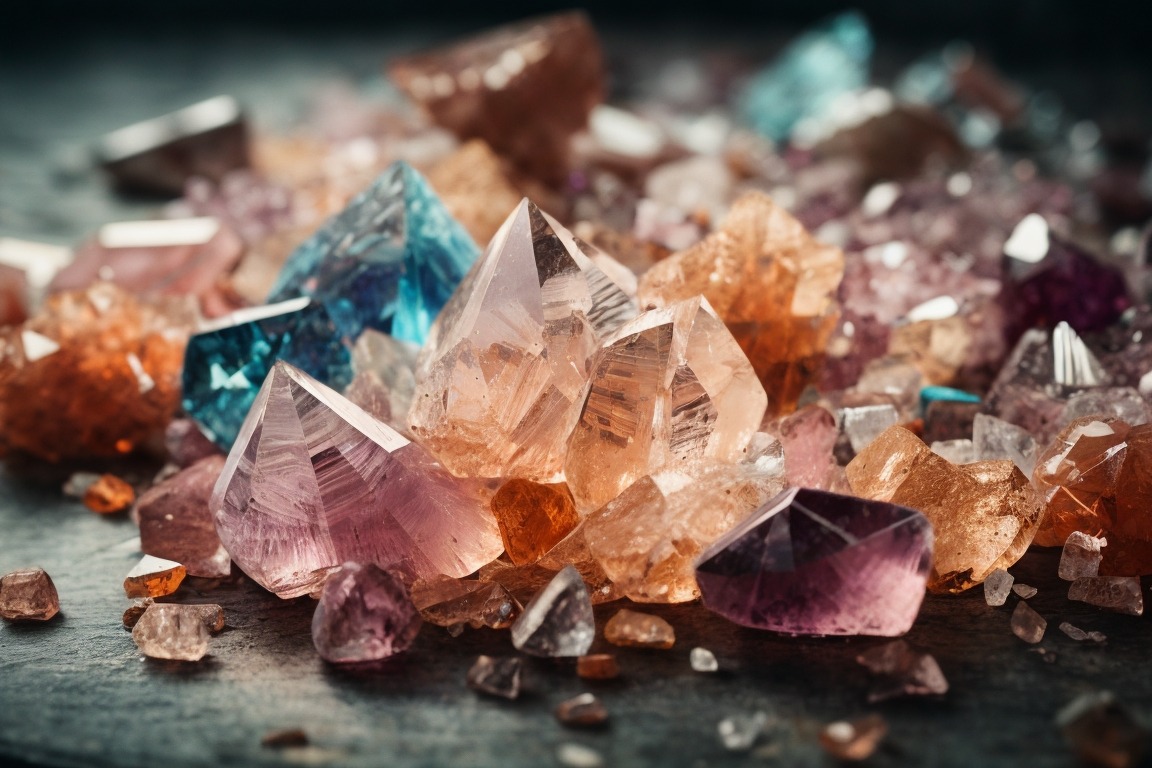
What is Reiki and how does it work?
Reiki is a healing technique that works on the mental, emotional, physical, and spiritual levels, making it a holistic approach to treating PTSD. It can be used to release stuck energy and promote healing from various traumatic experiences, such as physical injury, abuse, sudden change, and loss. Reiki operates on the principle that when our energy is balanced and flowing freely, we experience greater well-being and can better cope with the effects of trauma.
At its core, Reiki involves the use of hands-on or hands-off healing methods, where practitioners channel universal life force energy to the recipient. This energy is believed to flow through the body, addressing imbalances and blockages that may contribute to physical, emotional, or spiritual distress. By working on all levels of being, Reiki aims to restore harmony, reduce stress, and promote relaxation.
During a Reiki session, the practitioner places their hands on or near the recipient’s body, moving them along specific energy pathways called meridians or chakras. This gentle touch helps to facilitate the flow of energy, allowing it to reach areas of the body that may be holding tension or trauma. The recipient may experience sensations of warmth, tingling, or deep relaxation during the session, which can aid in the release of emotional and physical pain.
| Key Takeaways: |
|---|
| Reiki is a holistic approach to treating PTSD, working on the mental, emotional, physical, and spiritual levels. |
| It involves the use of hands-on or hands-off healing methods to channel universal life force energy. |
| During a session, the practitioner places their hands on or near the recipient’s body, facilitating the flow of energy and promoting relaxation. |
Using Reiki to address past, present, and future trauma
Reiki can help you address past, present, and future trauma by targeting the root of your experiences and providing a safe space for healing. Whether you have experienced physical injury, abuse, sudden change, or loss, Reiki can work on four levels: mental, emotional, physical, and spiritual. It is a holistic approach that aims to release stuck energy and promote overall healing.
When it comes to treating trauma, Reiki techniques for managing PTSD symptoms are gentle yet powerful. By accessing your energy field, Reiki can help release blocked emotions and promote a sense of balance and well-being. It provides a supportive and comforting environment where you can process and heal from your traumatic experiences.
Reiki provides a safe and gentle healing environment where you can confront and heal past, present, and future trauma.
One of the benefits of using Reiki for PTSD recovery is its ability to cut off the fear and panic circuit. Trauma often leaves us trapped in a cycle of fear and anxiety, but Reiki can help break that cycle. It can also build trust and lower mental and emotional defenses that have been put up as a result of trauma.
Reiki can also assist in releasing repetitive trauma patterns. Traumatic experiences often create patterns that keep us stuck and prevent us from moving forward. Reiki energy healing for PTSD can help release these patterns and create space for new and healthier ways of being.
Reiki Techniques for Managing PTSD Symptoms
Reiki techniques for managing PTSD symptoms involve placing hands-on or hands-off the body in specific positions to channel healing energy. These positions are determined based on the individual’s needs and can focus on areas where physical or emotional trauma has occurred.
| Reiki Techniques | Description |
|---|---|
| Full Body Reiki | The practitioner places their hands on or above the body, allowing the Reiki energy to flow and promote overall healing. |
| Localized Reiki | The practitioner focuses on specific areas of the body where trauma is stored, directing the healing energy to these targeted areas. |
| Chakra Balancing | Reiki can also be used to balance the energy centers of the body, known as chakras. By restoring balance to these centers, healing can occur on multiple levels. |
Reiki for PTSD recovery is a noninvasive and non-pharmaceutical option that can complement traditional therapeutic approaches. It provides a gentle and natural way to release stuck energy, promote healing, and support your overall well-being.
Scientific evidence supporting the effectiveness of Reiki for PTSD
Scientific research provides evidence of the effectiveness of Reiki in reducing PTSD symptoms, depression, and anxiety. Studies have shown that Reiki healing can have a significant positive impact on individuals struggling with the aftermath of trauma. One study published in the Journal of Alternative and Complementary Medicine found that participants who received Reiki sessions experienced a significant reduction in PTSD symptoms, including decreased anxiety and depression levels.
Another study published in the Journal of Traumatic Stress examined the effects of Reiki on veterans with PTSD. The results showed that Reiki sessions led to a reduction in hyperarousal symptoms and improved overall well-being. The participants reported feeling more relaxed, experiencing fewer nightmares, and having an increased ability to cope with stress. These findings suggest that Reiki can play a valuable role in the treatment of PTSD.
“Reiki has the potential to promote holistic healing by addressing the mental, emotional, physical, and spiritual aspects of trauma.”
Additionally, a meta-analysis conducted by researchers at Harvard Medical School analyzed the findings of several studies on the use of Reiki for PTSD. The analysis revealed consistent evidence of Reiki’s effectiveness in reducing symptoms such as flashbacks, sleep disturbances, and emotional distress. The researchers concluded that Reiki can be a valuable adjunctive therapy for individuals with PTSD, enhancing the overall well-being and quality of life.
Scientific evidence supporting the effectiveness of Reiki for PTSD
The scientific evidence supporting Reiki as an effective treatment for PTSD continues to grow. Ongoing research provides valuable insights into the mechanisms by which Reiki promotes healing and alleviates symptoms associated with trauma. The holistic approach of Reiki, addressing the mental, emotional, physical, and spiritual aspects of trauma, makes it a valuable therapy for individuals seeking noninvasive and non-pharmaceutical options for their PTSD recovery.
| Study | Journal | Findings |
|---|---|---|
| Journal of Alternative and Complementary Medicine | Significant reduction in PTSD symptoms, decreased anxiety and depression levels | |
| Journal of Traumatic Stress | Reduction in hyperarousal symptoms, improved overall well-being | |
| Meta-analysis by Harvard Medical School | Evidence of effectiveness in reducing flashbacks, sleep disturbances, and emotional distress |
Reiki has the potential to promote holistic healing by addressing the mental, emotional, physical, and spiritual aspects of trauma. The growing body of scientific evidence supporting its effectiveness in reducing PTSD symptoms, depression, and anxiety makes it an attractive alternative treatment option for individuals seeking healing and relief from the lingering effects of trauma.
How Reiki can help in healing from PTSD
Reiki provides a gentle healing environment that can help cut off the fear and panic circuit, build trust, and release repetitive trauma patterns. When dealing with Post-Traumatic Stress Disorder (PTSD), it’s crucial to create a safe space for healing, and Reiki offers just that. By working on the mental, emotional, physical, and spiritual levels, Reiki addresses the root of the traumatic experience and promotes overall well-being.
One of the ways Reiki aids in healing from PTSD is by cutting off the fear and panic circuit. Trauma can create a loop of fear and anxiety, making it difficult to feel safe and secure. Through the gentle touch and energy transfer, Reiki helps to interrupt this circuit, allowing the body and mind to relax and find a sense of calm.
Building trust is another vital aspect of healing from PTSD, and Reiki can help with that as well. Trust is often shattered due to traumatic experiences, making it challenging to open up and seek support. Reiki provides a safe and non-judgmental environment, allowing individuals to feel comfortable and begin rebuilding trust in themselves and others.
Repetitive trauma patterns are common in PTSD and can keep individuals stuck in a cycle of pain and distress. Reiki has the power to release these patterns by promoting the flow of blocked energy and restoring balance to the body and mind. By addressing the underlying energetic imbalances, Reiki helps individuals break free from the grips of repetitive trauma and find a renewed sense of freedom and empowerment.
| Benefits of Reiki for Healing from PTSD: |
|---|
| Provides a gentle healing environment |
| Cuts off the fear and panic circuit |
| Builds trust and fosters a sense of safety |
| Releases repetitive trauma patterns |
Choosing Reiki as an alternative treatment for PTSD
Reiki offers a natural and alternative approach to treating PTSD, allowing for the release of stuck energy and overall healing. When it comes to healing trauma, Reiki works on four levels: mental, emotional, physical, and spiritual. Through gentle touch and energy transfer, Reiki can help release blocked energy and promote healing in individuals who have experienced various forms of trauma, such as physical injury, abuse, sudden change, and loss.
One of the key benefits of using Reiki as a treatment for PTSD is its ability to address past, present, and future trauma. By targeting the root of the traumatic experience, Reiki creates a safe and supportive environment for healing. It can cut off the fear and panic circuit, build trust, and lower mental and emotional defenses, allowing individuals to release repetitive patterns associated with trauma.
Scientific evidence supports the effectiveness of Reiki in reducing PTSD symptoms, depression, and anxiety. This noninvasive and non-pharmaceutical option provides a gentle and holistic healing approach. Reiki not only addresses the physical and emotional aspects of PTSD, but also delves into the spiritual realm, promoting overall well-being and inner harmony. It offers individuals a chance to heal from within and regain balance in their lives.
Choosing Reiki as an alternative treatment for PTSD can be a transformative decision. It offers a natural therapy that focuses on releasing stuck energy and facilitating the healing process. If you are seeking a holistic approach to healing trauma and promoting overall well-being, Reiki may be the right choice for you. Embrace the power of Reiki and embark on a journey of healing and self-discovery.
FAQ
What is Reiki and how does it work?
Reiki is a holistic approach to healing that works on four levels: mental, emotional, physical, and spiritual. It uses energy to release stuck energy and promote healing for various traumas, including Post-Traumatic Stress Disorder (PTSD).
How can Reiki be used to address past, present, and future trauma?
Reiki targets the root of the traumatic experience and provides a safe and gentle healing environment. It can be used to treat past, present, and future trauma, offering a holistic approach to managing PTSD symptoms and promoting recovery.
Is there scientific evidence supporting the effectiveness of Reiki for PTSD?
Yes, scientific studies have shown that Reiki is effective in reducing PTSD symptoms, depression, and anxiety. It is a noninvasive and non-pharmaceutical option for healing from PTSD.
How can Reiki help in the healing process from PTSD?
Reiki can help by cutting off the fear and panic circuit, building trust, lowering mental and emotional defenses, and releasing repetitive patterns associated with trauma. It provides a gentle healing environment for individuals to heal from their past experiences.
Why should I choose Reiki as an alternative treatment for PTSD?
Reiki offers a natural therapy and alternative treatment for PTSD. It helps in releasing stuck energy and promotes overall healing. It can be a beneficial addition to traditional treatment methods for PTSD.



